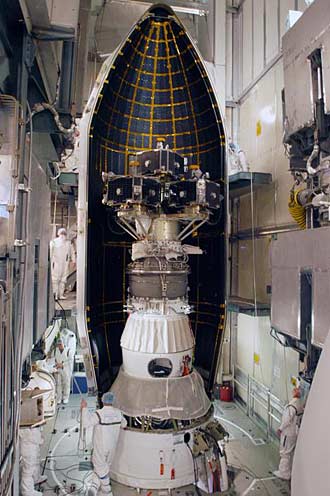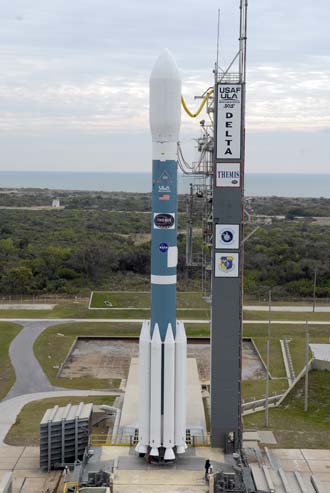A series of Themis satellites that will fly in the constellation, launched into space a few minutes ago (01:01 Israel time)
From the US Air Force Base at Cape Canaveral, near the Kennedy Space Center, a Delta 2 rocket was launched tonight with five identical satellites inside it designed to track a phenomenon known as magnetic substorms, which is responsible for the aurora borealis we see near the Earth's magnetic poles.
Besides the beauty of the phenomenon, it is important to discover the causes of the glow of the poles. These satellites will provide important data about the operation of the Earth's magnetosphere and the important connection between the Earth and the Sun.
The satellites were supposed to be launched yesterday at 01:05 but strong winds at high altitude prevented the launch. Today the weather in Florida improved and the launch was possible.
NASA is going to launch tomorrow a series of five satellites known as THEMIS (an acronym for Time History of Events and Macroscale Interactions during Substorms).
17/2/2007

NASA postponed by one day the launch of the Themis spacecraft series that was supposed to take place at 01:05 Israel time on February 17. The launch is now scheduled for February 18 after midnight. The reason for the postponement is strong winds at high altitude, as reported to NASA via weather balloons that were launched into the atmosphere. These winds are stronger than allowed for missiles of this type.
The satellite constellation is designed to solve the mystery behind the aurora borealis phenomenon. This phenomenon is a kind of "avalanche" of magnetic energy driven by the solar wind and which amplifies the north and south pole lights.
THEMIS will help us understand how and why radiation storms in space wreak havoc on satellites, high voltage lines and communication systems.
The THEMIS mission consists of five identical satellites - the largest number of scientific satellites that NASA has ever put into orbit on a single launcher. The unique constellation of satellites will be positioned along the Sun-Earth line, and will collect coordinated measurements once every four days. It is estimated that it will be possible to observe about 30 cases of aurora borealis during the planned period of the satellites' activity - two years. The data collected from the five satellites will determine the point where the aurora storms begin, an operation that was impossible to do with a single satellite.
This phenomenon is known as substorms. While the satellites will observe the phenomenon from above, about 20 ground stations in North America will monitor the aurora borealis.
Each satellite contains a fluxgate magnetomer, an electrostatic analyzer, a solid state telescope, a magnetometer and an electric field detector. Ground command of the satellites and their scientific operations will be managed by the University of California's Space Science Laboratory

In the photo: the Delta 2 rocket on the launch pad
